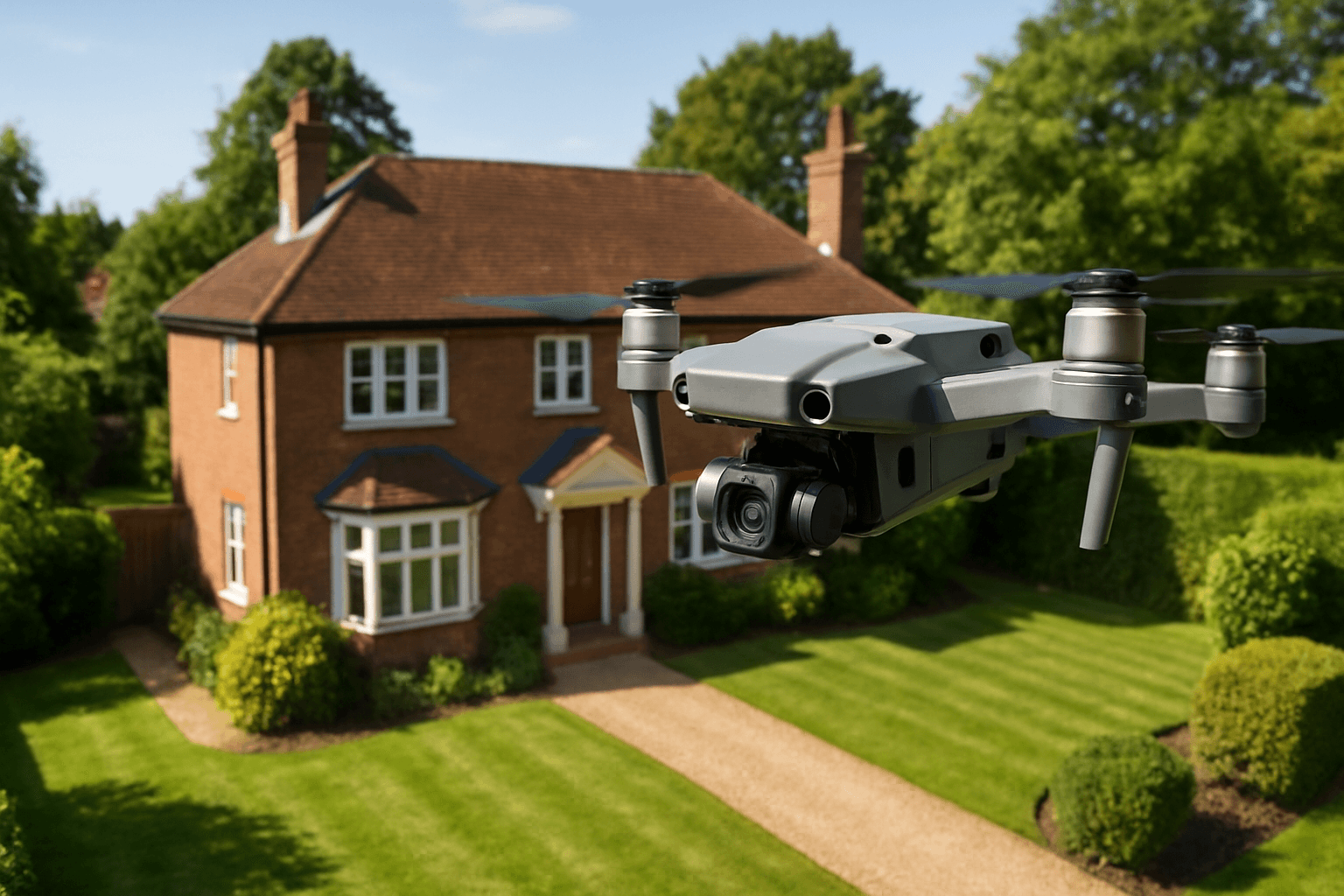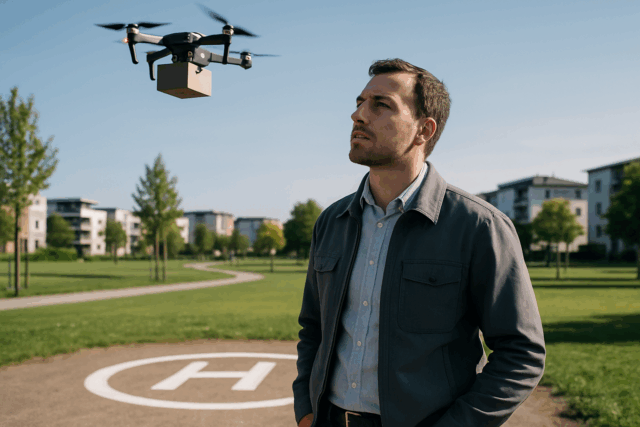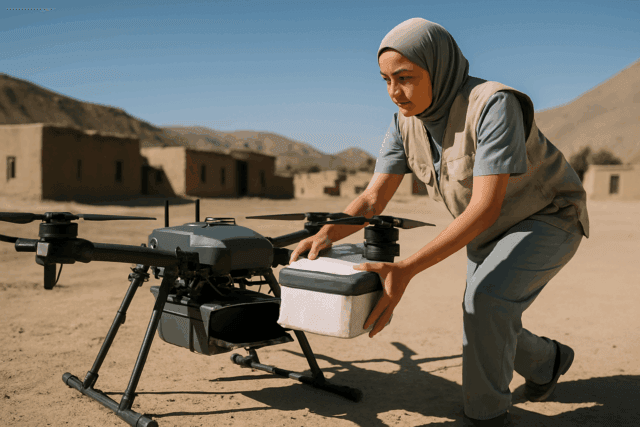Drones have revolutionized numerous industries, and real estate is no exception. In the UK’s competitive property market, estate agents are increasingly using drones to capture stunning aerial images and videos, offering prospective buyers a unique and immersive view of properties. This innovative approach enhances marketing efforts, attracts tech-savvy clients, and ultimately leads to quicker sales.
Why Drones Are a Game-Changer for Real Estate
Captivating Content and Unique Perspectives
Drones enable photographers to capture properties from various unique angles, providing dynamic shots that stand out from standard property photos. Aerial perspectives offer unmatched context, showcasing the property’s surroundings, landscaping, and spatial context in ways traditional photography simply can’t match. Studies reveal that listings with drone-captured photos sell up to 68% faster.
Highlighting Property Features
Drones excel at capturing important and impressive property features that are difficult to showcase through traditional photography. Whether it’s a spacious back garden, a swimming pool, beautiful scenery, or exceptional views, drone footage can highlight these features effectively. For larger properties like warehouses or industrial units, drones can even capture aspects of the property’s interior with superior shots, especially with 360-degree filming.
Creating a Memorable First Impression
In a competitive housing market, standing out is crucial. Aerial footage adds a “wow” factor to property listings, making them more likely to capture a buyer’s attention. A dynamic video showcasing a property’s best angles and surroundings can leave a lasting impression, encouraging buyers to take the next step and book a viewing.
Saving Time for Sellers and Buyers
Drone filming helps attract serious buyers by providing an accurate and detailed visual representation of the property. This reduces the number of unnecessary viewings, saving time for both sellers and buyers. Buyers can make more informed decisions after viewing aerial footage, ensuring their expectations align with what the property offers.
Building Trust Through Transparency
Aerial footage offers a level of transparency that builds trust with potential buyers. By providing a clear and honest view of the property and its surroundings, drone filming helps buyers feel confident in their decision, making the sales process smoother and more efficient.
Cost-Effectiveness
Capturing high-quality photos and videos with drones is affordable compared to hiring an aircraft or helicopter. Aerial photography can generate more sales, increasing profit while showcasing properties to potential buyers.
How to Use Drones Effectively in Real Estate Marketing
Property Marketing
Drones provide quality content that guarantees to set you apart. Aerial footage is an excellent way to show potential clients the surrounding area, visually highlighting key selling points such as the neighborhood, local schools, shops, churches, or general places of interest.
Virtual Tours
For large properties, drone footage can capture aspects of the property’s interior with superior shots, especially where 360-degree filming or photography is possible, offering stunning virtual tours.
Property Inspections
Drones can be used to inspect roofs, chimneys, and other hard-to-reach areas, providing valuable insights into the property’s condition. This is particularly useful for seller pre-sales information packs and purchaser condition surveys.
Site Analysis
Drones offer a comprehensive site analysis for buyers considering land procurements or project viability studies. They provide an overall preview of the properties and the surrounding area, offering insights into traffic patterns, neighboring developments, and zone limitations.
UK Drone Laws and Regulations for Real Estate
Civil Aviation Authority (CAA) Regulations
In the UK, drone operations are regulated by the Civil Aviation Authority (CAA). Any drone operator flying for commercial gain must have permission from the CAA, holding a CAA PfCO (Permission for Commercial Operation) status and valid commercial drone insurance. Hiring an illegal drone operator without insurance or CAA permission could result in prosecution and a hefty fine.
Registration and Safety Awareness
The UK government requires mandatory registration of drones and a safety awareness course for owners of small unmanned aircraft. These regulations ensure that drone operators are aware of the rules and responsibilities associated with flying drones commercially.
Privacy and Data Protection
Drone operators must adhere to GDPR and privacy laws, navigating them carefully. If a drone captures identifiable individuals, it’s considered personal data, requiring a legal basis for collection, like consent or legitimate interest. Transparency is key, and operators should only capture what’s necessary while being visible as the pilot.
Individual Rights
Individuals have the right to know if a drone has captured a photo of them or their property and can request to see that data. They can also request the operator to delete it. Drone operators need to have systems in place to handle these inquiries and deletions.
Flying Restrictions
Due to legal restrictions and policies imposed by governing bodies, it is not always possible to legally take off, fly, or land a drone in many residential areas due to distance restrictions.
Choosing the Right Drone for Real Estate
Camera Quality
The camera is the most critical component of a real estate drone. Look for drones with:
- Resolution: Prioritize drones with 4K video and 20+ MP still photos.
- Sensor Size: Larger sensors (e.g., 1-inch CMOS) perform better in low light and offer dynamic range.
- Adjustable Aperture: Allows control over depth of field.
- Gimbal Stabilization: A 3-axis gimbal is essential for smooth footage in windy conditions.
Recommended Drones
- DJI Mini 4 Pro: A compact and capable drone, ideal for real estate photography and videography.
- DJI Air 3: Offers advanced aerial and camera technology.
- DJI Mavic 3 Series: Features next-level imaging performance.
Tips for Stunning Real Estate Drone Photography
Pre-Flight Strategy
Begin with meticulous planning, including identifying key features to highlight and obtaining necessary permissions.
Optimize Camera Settings
Shoot in RAW format to retain maximum editing flexibility. Adjust settings to suit lighting conditions and desired effects.
Compose with Purpose
Apply the Rule of Thirds to position key elements along gridlines for balanced framing.
Execute Controlled Flights
Smooth footage hinges on deliberate movements. Practice flying in a controlled environment before shooting.
Adapt to Environmental Challenges
Turn weather setbacks into opportunities by capturing unique atmospheric conditions.
Refine in Post-Production
Use software like Lightroom or Photoshop to correct lens distortion, enhance colors, and remove distractions.
Highlight the Property’s Narrative
Focus on showcasing the property’s unique story and appeal through creative angles and perspectives.
The Future of Drones in Real Estate
As drone technology continues to advance, its role in real estate marketing will only expand. FPV (First-Person View) drones offer immersive 3D experiences, allowing potential buyers to virtually tour properties as if they were physically present. This technology is particularly valuable for showcasing properties to remote buyers, providing a comprehensive and engaging viewing experience.
Conclusion
Drones have become an indispensable tool for real estate agents in the UK, offering a range of benefits from captivating content to cost-effective marketing. By understanding the regulations, choosing the right equipment, and mastering the art of aerial photography, estate agents can leverage drones to elevate their listings, attract more buyers, and ultimately drive sales. As the technology evolves, the possibilities for using drones in real estate are endless, promising an exciting future for the industry.





